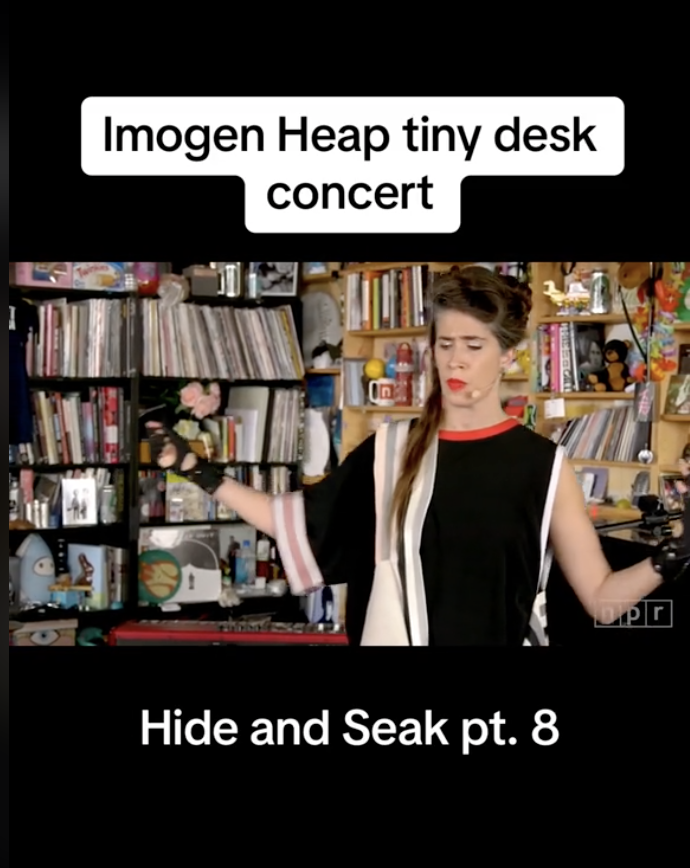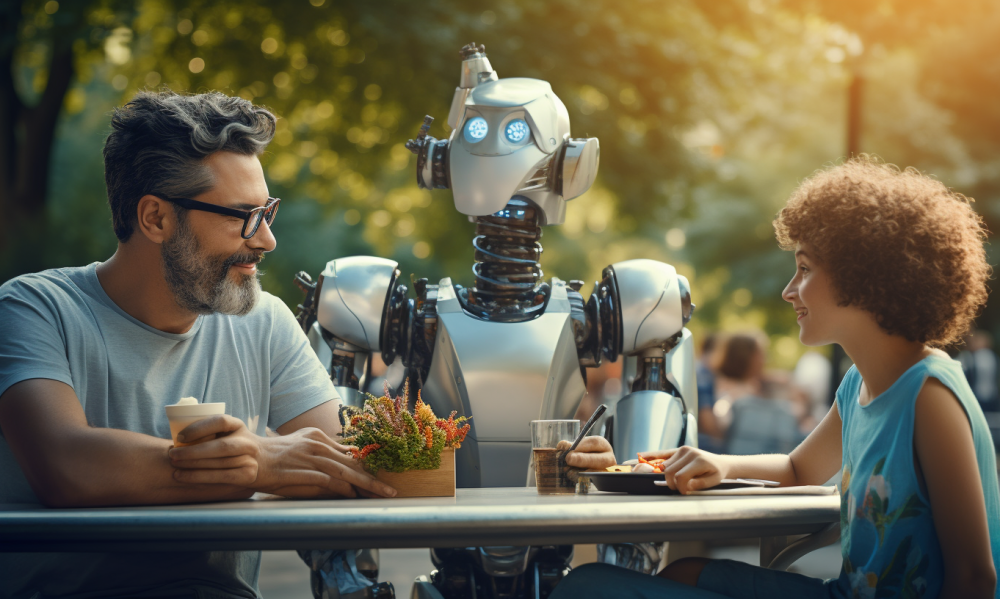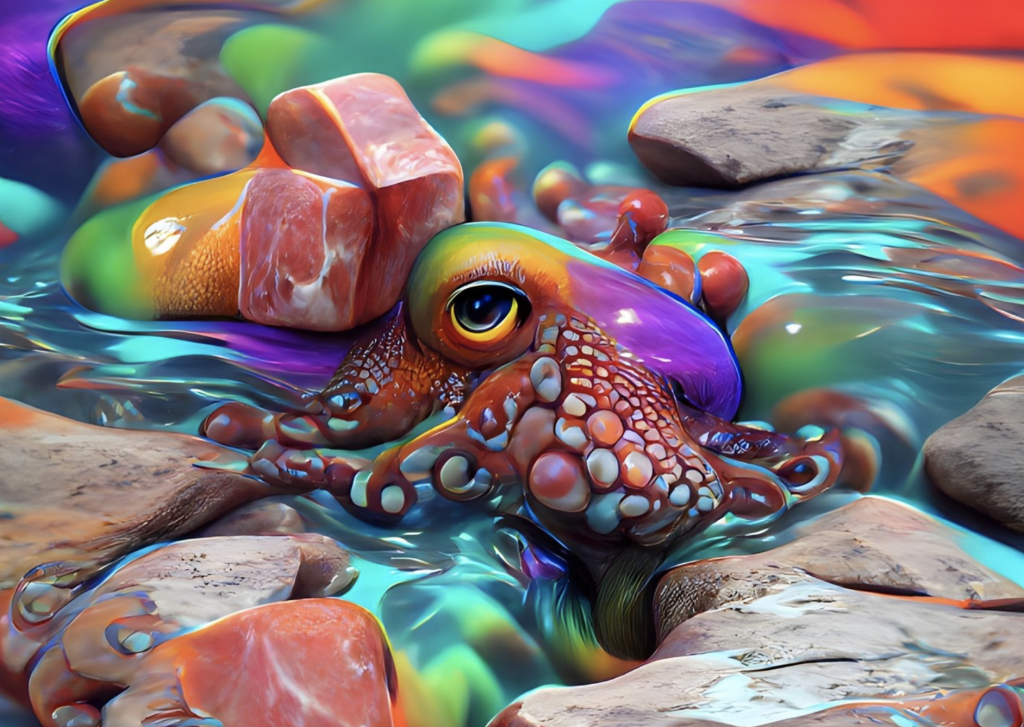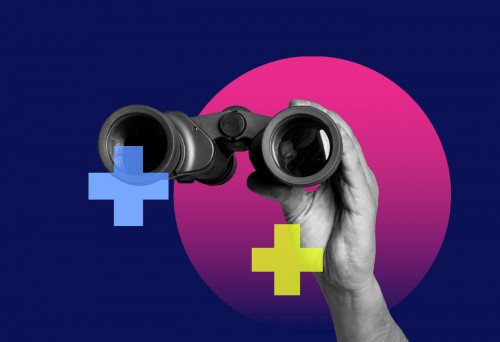Culture is constantly evolving – we've identified nine emerging trends shaping 2023.
Cyborgification: The Feel-Good Side of Combined Intelligence
Modern technologies that blur the human-machine boundary — generative AI, chip implants, and computerized wearables to name a few — are signaling a future that’s more wholesome than pop culture predicted. But before we get into the why, it’s important as cultural strategists to first dig into the tensions behind this hot take.
The thought of merging artificial and human intelligence often triggers a deeply programmed fear of the end of humankind altogether, and classic pop culture machine-takeover-apocalypse hits like The Terminator and The Matrix are well-engrained in the collective conscience. But intelligent tech is no longer a science fiction fantasy. Modern science is diving further into the reality of chip implantation as Elon Musk’s Neuralink brain-chipping tech just received FDA clearance for clinical trials in late Spring. And Jennifer Lopez recently consented to Virgin Voyages using her AI likeness in their latest campaign, “Jen AI,” ushering in a new era of marketing and entertainment. Today’s fictional narratives and conspiracy theories have matured to a state of Cyborg Panic, and shows like Apple TV+’s Severance and Netflix’s Black Mirror are quick to capitalize on the resulting fears of entrapment and control.
Despite these tensions, we’re spotting cultural signals that suggest cyborgification may actually be leading us to find a deeper sense of humanity and connection. This is an evolution of our trend Wholesomely Human, where people turn to feel-good content to celebrate the joyful and connective experiences of everyday life. AI-generated memes and videos are uniting us around dumb humor, and the possibilities within artist-machine collaboration are inspiring breakthroughs in music and art performance.
United by Dumb Humor: Cyborg Style
The Upright Citizen Brigade’s Improv Training Manual Truth in Comedy proclaims, “The truth is funny. Honest discovery, observation, and reaction is better than contrived invention.”1 But with increasing sociopolitical polarization, it’s growing more difficult for Americans to rally around the same humor. What is “true” for one person is often different for the next. But generative AI gives us something unique: a third-party (and non-human) observation of ourselves.

From AI’s awkward portrayal of hands to celebrity images like Will Smith eating plates of spaghetti and the Pope in a high-fashion puffer jacket, we’re finding a new kind of humor that revels in the lighter side of machine intelligence. Collaborative memes and videos made by man and AI are flooding the internet, prompting what The New York Times dubbed “The Funposting Zone” — the intersection of machine stupidity and human intelligence alongside the intersection of machine intelligence and human stupidity. The absurd, viral, share-worthy content is giving us a reason to lower our swords and laugh at ourselves in the face of massive change.
A Cyborg Symphony
Groundbreaking artists and musicians are playing with Web3 and Artificial Intelligence to connect more deeply with fans and showcase how “organic” the marriage between man and machine can be. Musician Imogen Heap has long used synthetic technology and looping systems to create hauntingly beautiful, layered sounds. But the origin of her signature sound isn’t just high tech, it comes from her own choreographed hand movements via computer-connected Mi.Mu gloves. Her 2019 NPR Tiny Desk concert and glove demonstration has recently made viral rounds on TikTok, with a nine-part series amassing nearly 12M views.

Turkish artist Memo Akten’s years-long Distributed Consciousness project aims to demonstrate the interconnectedness of technology, humanity and consciousness. Beginning as a 256-piece series of AI-generated NFTs of colorful underwater creatures, Akten encoded Chat GPT-3-prompted poetic verses inside the pixels of each image, collectively forming a manifesto on themes like biological and artificial intelligence, evolution, phenomenology, ecological awareness, and climate change. The project is now on view as an immersive audio-visual installation at the Australian Centre for the Moving Image in Melbourne through June 2024.
WHAT IT MEANS FOR BRANDS
Brands can leverage cyborgification to unite their users and fanbases in surprisingly wholesome ways. Here’s how.
- Meme the Scene: A streaming entertainment brand can partner with an AI art generator like Midjourney to let fans create absurd AI-interpreted memes of their favorite scenes from a new series or movie with a sponsored free trial. To integrate this into the streaming experience, give people the option to co-view the content alongside a pop-up window that incorporates the memes in real time.
- Sports Symphony: Sporting events are already full of camaraderie and collective excitement, but AI can make this experience even more connected and share-worthy. A professional sports brand could use AI to capture the sounds and scenes of the game to produce a one-of-a-kind anthem, synthesizing sounds in real-time into a “crowdsourced” song that patrons can download and share on social. Imagine an AI performance of the Superbowl at Halftime created on the fly using sounds from the crowd and players – alongside pop icon performances, of course.
1 Truth in Comedy, Del Close, Charna Halpern, and Kim “Howard” Johnson; 1994





